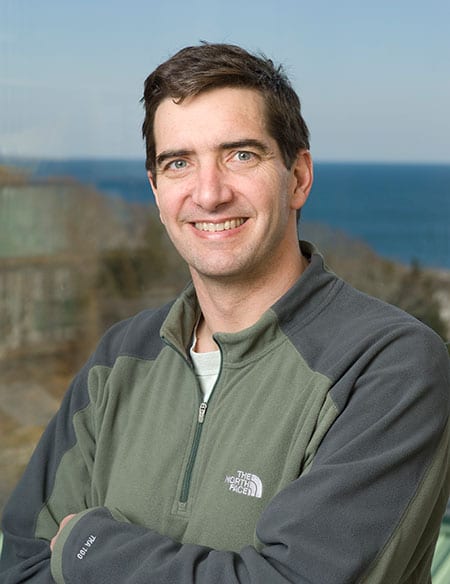WHOI Contributes to National Climate Assessment Report 3
May 6, 2014
More than 300 scientists contributed to the latest report on the current and future impacts of climate change on the United States. After an extensive review by experts from federal agencies and the National Academy of Sciences, the National Climate Assessment (NCA) Report 3 was approved and released for the public on May 6, 2014.
The report examines the impact our changing climate is having and will have on various regions throughout the U.S., as well as its coasts and the ocean. It also examines climate change impacts on various sectors such as natural resources, ecosystems, and human health.
“It is important to view climate change at a local and regional scale because that is where it will have the largest and most direct impacts on people and communities,” said WHOI Senior Scientist Scott Doney, a contributor to the report.
Multiple sources of evidence confirm that human activities including the burning of coal, oil, and gas plus the clearing of forests are the primary causes of global warming. The concentration of carbon dioxide (CO2) in the atmosphere has increased by 40 percent since the Industrial Revolution. Since 1895, the average U.S. temperature has increased by 1.3°F to 1.9°F with most of the increase occurring from 1970 to today. Over the next few decades, temperatures are expected to rise another 2°F to 4°F in most areas of the United States.
The oceans help regulate climate, absorb heat-trapping gas such as CO2, and influence weather patterns across the country. More than 160 million people live in the coastal U.S. The oceans are significant to everyone’s environment and livelihood.
Doney is a convening lead author on Chapter 24: Oceans and Marine Resources. The chapter outlines six key messages about the impacts of climate change on the ocean:
1. The rise in ocean temperature over the last century will persist into the future, with continued large impacts on climate, ocean circulation, chemistry, and ecosystems.
2. The ocean currently absorbs about a quarter of human-caused CO2 emissions to the atmosphere, leading to ocean acidification that will alter marine ecosystems in dramatic yet uncertain ways.
3. Significant habitat loss will continue to occur due to climate change for many species and areas, including Arctic and coral reef ecosystems, while habitat in other areas and for other species will expand. These changes will consequently alter the distribution, abundance, and productivity of many marine species.
4. Rising sea surface temperatures have been linked with increasing levels and ranges of diseases in human and in marine life, including corals, abalones, oysters, fishes, and marine mammals.
5. Climate changes that result in conditions substantially different from recent history may significantly increase costs to businesses as well as disrupt public access and enjoyment of ocean areas.
6. In response to observed and projected climate impacts, some existing ocean policies, practices, and management efforts are incorporating climate change impacts. These initiatives can serve as models for other efforts and ultimately enable people and communities to adapt to changing ocean conditions.
Doney is also a contributing author to Chapter 2: Future Climate Change, which outlines the projected temperature changes in the polar regions as well as the U.S. It also explores changes in freshwater (rainfall, flooding, and drought) and sea level rise. The chapter finds a rise in the frequency of some extreme events.
For more international information, read the digest prepared by WHOI of the latest Intergovernmental Panel on Climate Change report.
The Woods Hole Oceanographic Institution is a private, non-profit organization on Cape Cod, Mass., dedicated to marine research, engineering, and higher education. Established in 1930 on a recommendation from the National Academy of Sciences, its primary mission is to understand the ocean and its interaction with the Earth as a whole, and to communicate a basic understanding of the ocean’s role in the changing global environment. For more information, please visit www.whoi.edu.

